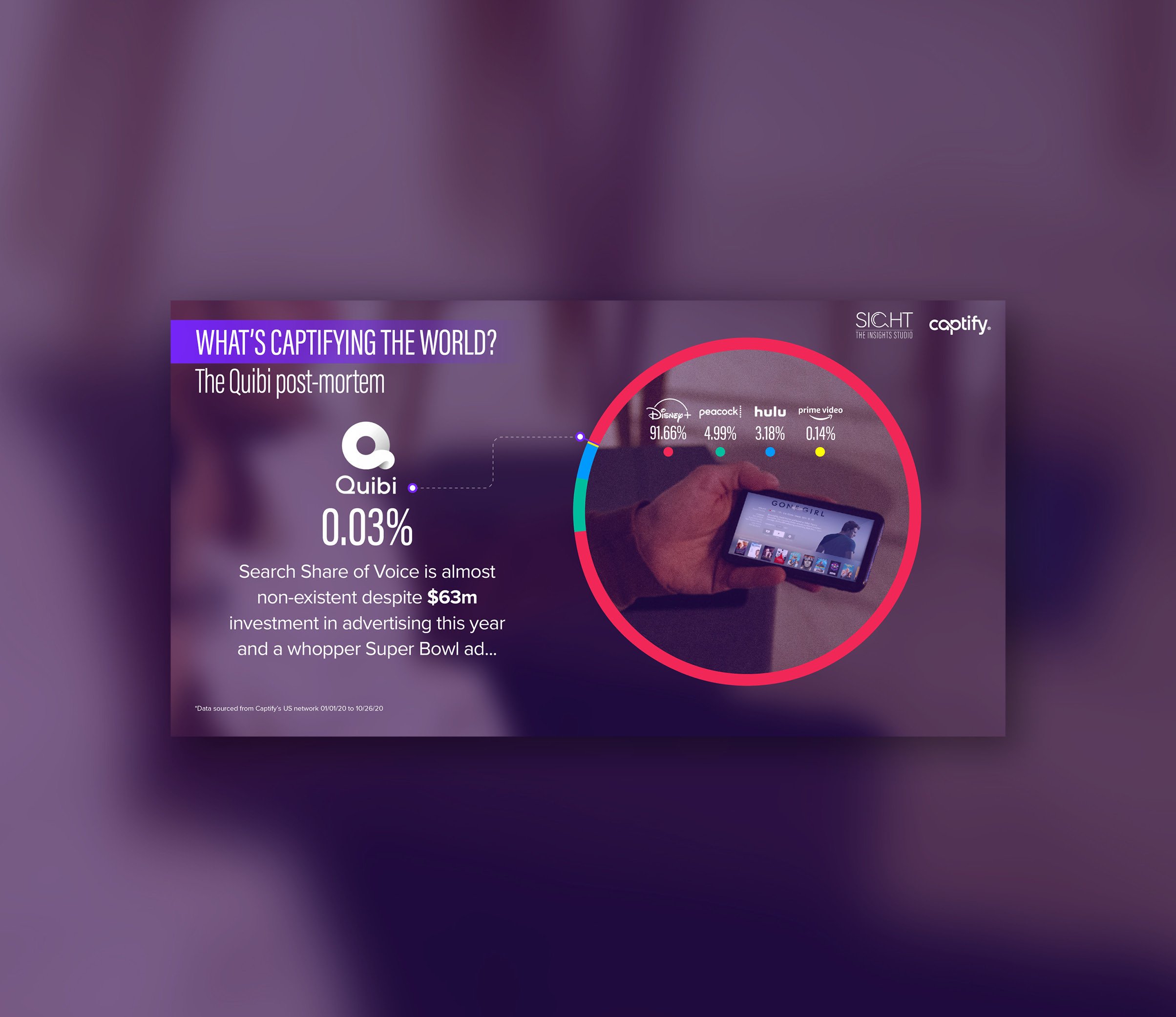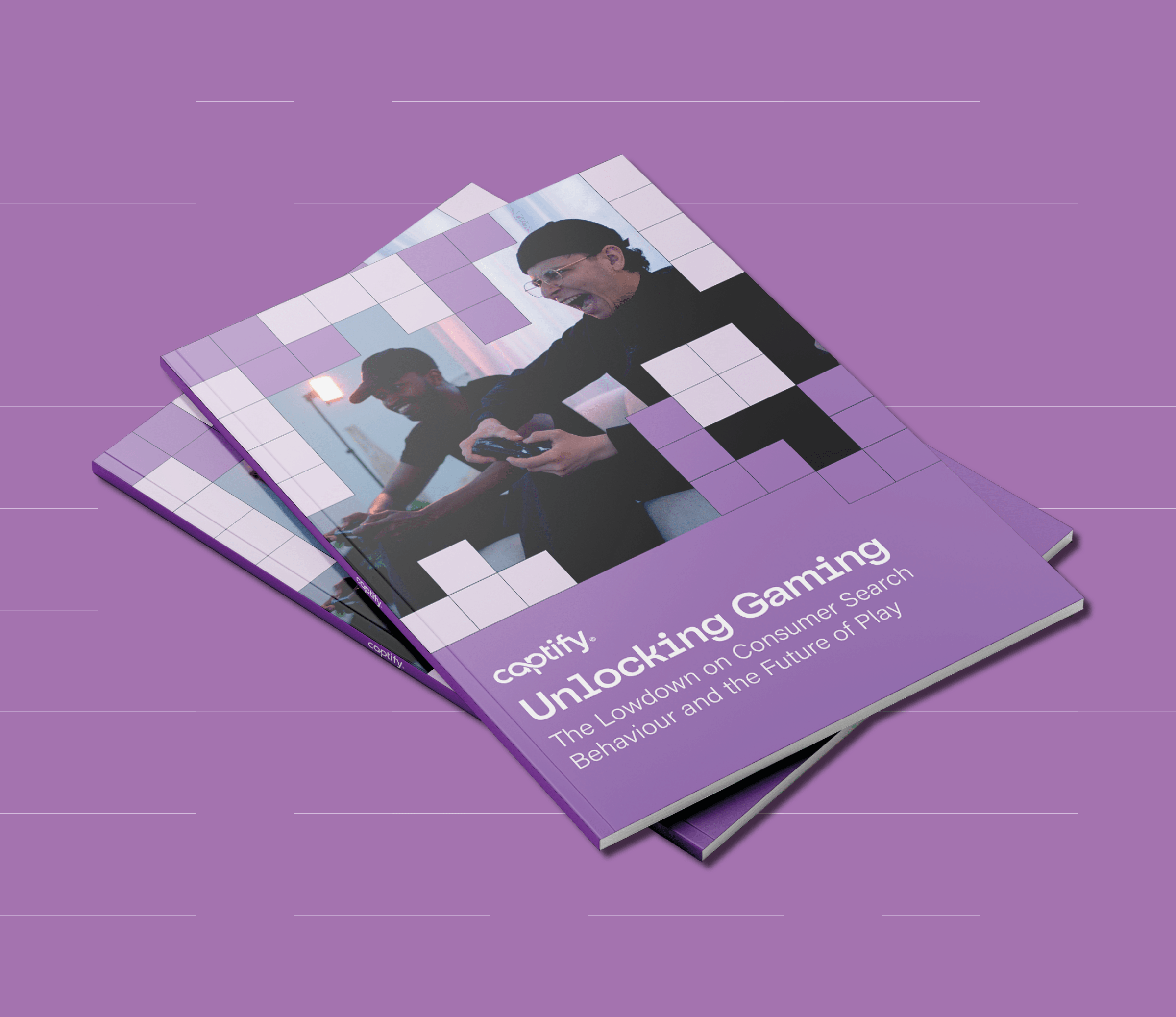What’s Captifying the World: The Quibi Post-Mortem
Why Quibi’s investors should have monitored Search Share of Voice for early warning signals
The state of play
Quibi, the short-form video streaming service was officially declared ‘dead’ last week by co-founders Jeffrey Katzenberg and Meg Whitman after a six-month lifespan – MediaPost reported.
A $63m advertising investment wasn’t enough to make Quibi a success.
Quibi was named as the fifth-largest advertiser in the video streaming category year-to-date, behind Amazon Prime Video, Disney+, Hulu, and Peacock (in alphabetical order).
It’s reported that this year alone, Quibi spent $63 million across TV, digital, and print advertising to promote their service, according to an analysis by advertising sales platform MediaRadar. The streaming service invested in enlisting top-tier Hollywood directors and celebrities to create shows and movies for its app.
In February, Quibi made large advertising pushes— including a new Super Bowl commercial, where Quibi attempted to explain its concept to 99.9 million Super Bowl viewers. The commercial flopped – being rated as among the 5 worst-rated Super Bowl Ads by USA Today’s Ad Meter.
Quibi invested heavily in advertising across March and April in preparation for their big launch on April 6, and spending continued right up until October when Quibi was declared ‘dead’.
Quibi…we could have seen it coming!
Although many streaming services, such as Netflix and Disney+ saw a subscription surge with the emergence of new streamers and increased screentime during the pandemic, Quibi’s snackable content or ‘short bites’ were aimed at commuters and launched at a time when millions of Americans were forced into lockdown.
Quibi’s investors could have seen it coming by monitoring their Search Share of Voice for early warning signals…
Captify analyzed search behaviors across the web over the past 10 months (Jan 1 to 26 Oct) to understand how Quibi’s Search Share of Voice (SSOV) stood up against the top five advertisers in the video streaming category. The data speaks volumes – with Quibi holding less than 1% SSOV compared to Disney+, who hit its 5-year subscriber goal (60 million) in just nine months.
- Disney+ 91.66%
- Peacock 4.99%
- Hulu 3.18%
- Amazon Prime Video 0.14%
- Quibi 0.03%
Why Search Share of Voice matters more than Share of Voice
Share of voice is a marketing theory created by James Peckham. It states that when you launch a brand, you should set its advertising budget based on your desired share of the market and that your initial share of voice should be 1.5 times the desired market share you want to achieve by the end of the brand’s second year.
In a recent article for Marketing Week, Mark Ritson describes Search Share of Voice as a ‘more elegant’ alternative to the somewhat archaic metric of Share of Voice. And we agree.
“Search would appear to be a far more universal assessment tool than the amount spent on advertising. The data for share of search would be just as relevant to sectors where standard advertising is less important.” Ritson, 2020
Why?
Search Share of Voice is more explicit and predictive
Measuring how many consumers are searching online for different brands is a more powerful and explicit way to measure interest and intent, linked to advertising investment. What the traditional metric of Share of Voice doesn’t tell us is the ‘why’ and the ‘what happens next’ as consumers move further down the funnel.
It changes, just like consumers
Categories change daily, new brands on the block change how brands should compete with each other. Search Share of Voice gives brands a much more immediate view of the world and an opportunity to react and act.
Categories are not what you think – Search can help with that
If you think about, the notion of a ‘category’ is too simple and linear. Brands need to understand who else is competing for their consumer’s disposal income, not just their direct and obvious competitors.
An example of this is Baileys – the liqueur brand competes in the alcohol space but also in the ‘treat category’. You’d need to look at their Search Share of Voice against products like spa trips, wine, chocolate, or ice-cream as a way to penetrate consumers through a mindset, not just those looking for an alcohol alternative. Search Share of Voice spotlights new and often hidden audiences.
The world of Search outside of Google for a better view of the world
There’s a whole world of search data outside of Google, that can help brands better understand interests and intent as consumers navigate and shop across the web – from travel sites to e-commerce websites and more. Onsite search is richer and deeper than Google’s navigational type search – a pretty good view of a brand’s world.
In this case, we can’t help Quibi but can help you. Get in touch for insights relating to your brand’s Search Share of Voice.



